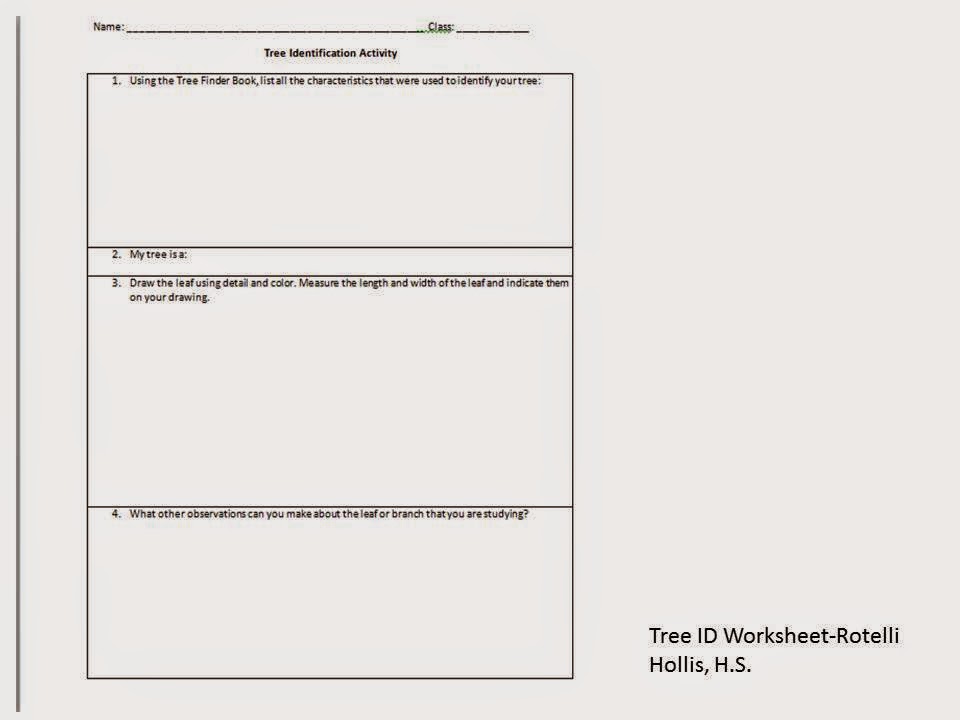Tuesday, December 23, 2014
Wednesday, December 3, 2014
Friday, November 21, 2014
MORE VIEWS FROM THE FIELD
Athol High School Teacher, Sharon McDonald, has partnered with Americorps Volunteers at Mount Grace Land Trust to investigate multiple 10x10 meter plots as part of Harvard Forest LTER's "Our Changing Forests" project. Sharon had her students " making observations of interesting pictures to take and describe inside the plot, measuring dbh (several pix) and trying to figure out the tree species. The non-woody plants are pretty extensive too, so each student will be assigned either a tree or woodland plant to investigate and do a research poster on." Athol students are researching plots at their schoolyard as well as the Skyfields Arboretum.
Tuesday, November 18, 2014
Views from the Field
Autumn 2014
Our Changing Forests Schoolyard Field Research- F.W. Parker Charter School, Devens, Ma.
 |
| Measuring Diameter at Breast Height (DBH) of dead Tree |
 |
| Measuring DBH of live standing tree |
 |
| Using DBH stick to indicate the correct height at which to measure DBH with diameter tape |
What does your Schoolyard field site look like?
Send photos with permission to post on our blog and/or webpages to Pamela Snow, Schoolyard Coordinator at: psnow@fas.harvard.eduTuesday, October 28, 2014
We are serious about your data!
Harvard Forest LTER Schoolyard Ecology recognizes that without data, the scientific process in not complete.
So your students have gone outside to collect data at or near your schoolyard-Wonderful!!! We are thrilled that you were able to set up your field site and do the extra organizational work of getting your kids outside! We know that that alone is further than most teachers get in engaging their students in real science in their local environment. Congratulations! You have succeeded in a crucial part of your Schoolyard Ecology study.
Now, we want you to make sure that you and your students are able to make meaning out of what you have done in the field. We need you to submit your data onto our online database in order to understand what the field data is saying. While the data is fresh, enter it on our simple online database.
We will post the data on our website so it is available to you and your students over time. It will also be available to other sites who may want to compare their field site data to diversity of locations to make even more meaning of their study.
online graphing tool.
We recommend that you do take the time to have students hand graph, and/or create graphs using a software system that requires them to think about how to organize the data, label axis, and other graphing skills. Our online graphing tool is designed to add to these other more time and thought intensive ways of representing student data.
Teachers- We invite 1st year teachers who would like to get started on learning how to manage project data to come to our:
Level 1 Data Workshop for Teachers on November 5th at Harvard Forest.
Information Manager, Emery Boose, will briefly show teachers how professional ecological data is stored and managed at Harvard Forests. He will then focus on how Schoolyard data is stored and managed;how to input data using our online data base; and how to create instant graphs
using the online graphing tool. Break out project groups will meet with ecologists to talk over any field issues, questions, and data related issues and questions. Teachers will go away from the workshop understanding how to input project data onto the database; how to graph project data on the online graphing tools: and how to engage their students in better understanding what their data is saying.
Teachers who have already successfully mastered the online data input process, are invited to attend our more advanced data workshop called, LOOKING AT DATA: Organizing,
representing, interpreting your students’ data.

See Advanced Data Workshop Highlights to get a peak at how this workshop went last year. Teachers at this workshop choose to work at level 2 or 3 on this day. Level 2 teachers work on structured graphing exercises that help provide experience using Excel to graph project data. See the Graphing Manual and Graphing Exercises that form the basis of this workshop developed by ecologist, Betsy Colburn. At the end of level 2, teachers go away having created a series of data tables and graphs from real Schoolyard data sets that are preselected by Harvard Forest staff.

See Advanced Data Workshop Highlights to get a peak at how this workshop went last year. Teachers at this workshop choose to work at level 2 or 3 on this day. Level 2 teachers work on structured graphing exercises that help provide experience using Excel to graph project data. See the Graphing Manual and Graphing Exercises that form the basis of this workshop developed by ecologist, Betsy Colburn. At the end of level 2, teachers go away having created a series of data tables and graphs from real Schoolyard data sets that are preselected by Harvard Forest staff.
Those teachers who have completed level 2 previously, are encouraged to work on graphing their own project data, in ways that tell a story that will be meaningful to their own students. For that reason, teachers in level 3 decide on their own focus prior to attending the workshop.
Harvard Forest provides mentors that support teachers in determining how to organize their data, and helps trouble shoot throughout the graphing process. Usually level 3 folks go away having created one or more graphs of their students' data that is specifically tailored to their learning goals. To see examples of graphs and datatables that level 3 teachers have created in the past, go to: Data Level 3 graphs and tables
So join us for a data workshop this fall and ...
SHOW US YOUR DATA!
So join us for a data workshop this fall and ...
SHOW US YOUR DATA!
Subscribe to:
Comments (Atom)















































